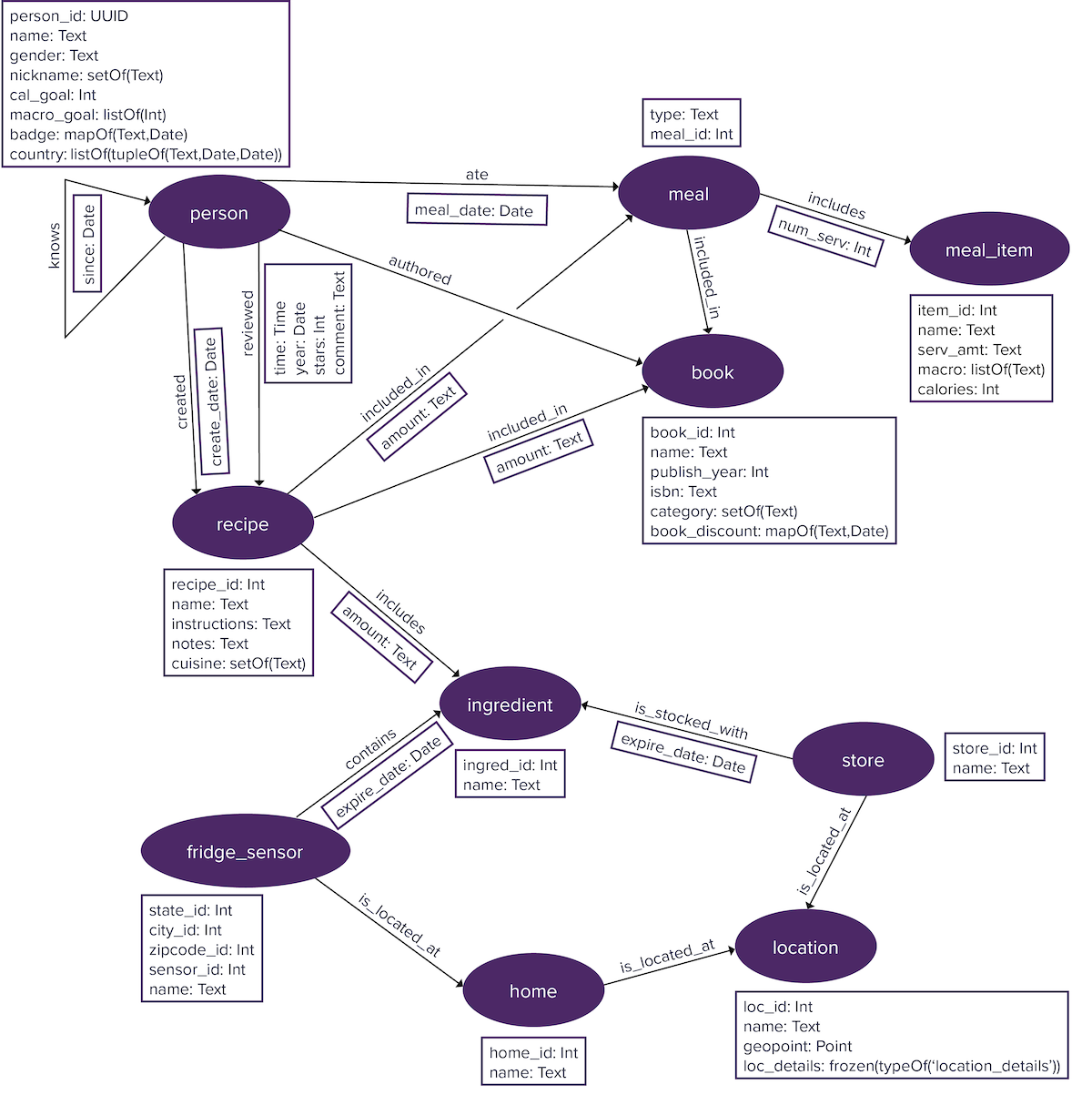Creating queries using traversals
DSE Graph can create complex queries that traverse the relationships of the graph structure. If the complex queries require real-time results, DSE Graph is the best product for discovering answers. Start with the Quick Start traversals that increase in complexity in a stepwise fashion. The examples shown here will continue with the food graph:

Additional complex Gremlin recipes can also be found at Apache TinkerPop Recipes.
- Anatomy of a graph traversal
-
The anatomy of a graph traversal explores the results of each traversal step.
- Using indexes
-
Using indexes for graph queries.
- Using search indexes
-
Using search indexes for graph traversals.
- Simple Traversals
-
Simple traversals can be complex, but not employ specialized techniques such as recursion or branching.
- Geospatial traversals
-
Creating geospatial traversal queries.
- Branching Traversals
-
Branching traversals allow decision points to be inserted into the traversal processing.
- Recursive Traversals
-
Recursive traversals allow iterative processing over traversal paths.
- Path Traversals
-
Path traversals map traversal steps to a location to use in the event that a previous location must be revisited.
